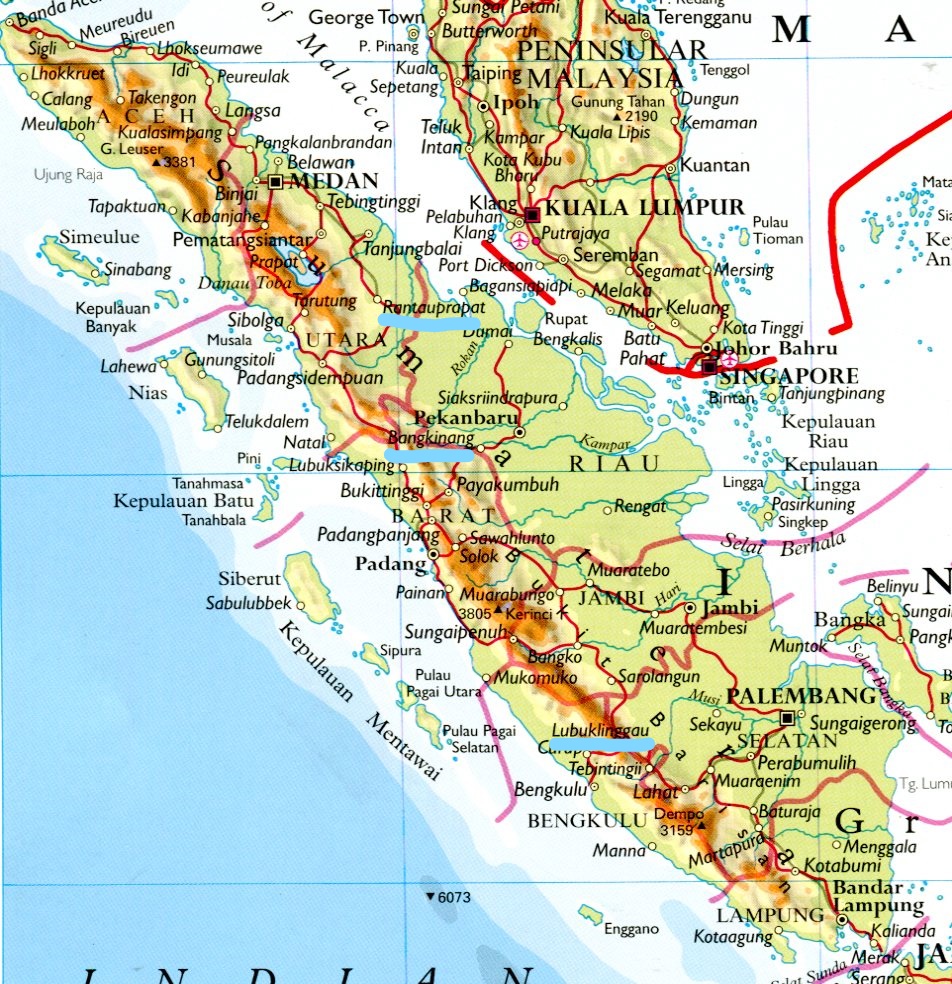Sumatra Japanese Prison Camps
Japanese Prison camps on Sumatra.
 By the time of the Japanese capitulation ( 15 August 1945) , all European civilian prisoners of war on Sumatra had been concentrated in prison camps in three remote areas; Rantau Prabat, Bangkinang and Loeboeklinggau-Belalau ( today’s Lubuklinggau).
By the time of the Japanese capitulation ( 15 August 1945) , all European civilian prisoners of war on Sumatra had been concentrated in prison camps in three remote areas; Rantau Prabat, Bangkinang and Loeboeklinggau-Belalau ( today’s Lubuklinggau).
By this date these Japanese prison camps held total of 4018 Men and boys and 7464 women and children ( almost no boys over ten years of age). Prisoner identity records kept by the Imperial Japanese Army were virtually all destroyed except for those of 900 men, and 1800 women and children.
Below is presented summary of camp information extracted from the website www.japanseburgerkampen created by Henk Beekhuis. During the Japanese occupation the Military authorities expended much energy in concentrating the widely scattered European population , many from the numerous rubber and sugar cane plantations on this huge island.
| Sumatra Civilian Prison Camps | ||
| Region | Number of Camps | |
| Dec-42 | Aug-45 | |
| North Sumatra | 23 | 6 |
| Middle Sumatra | 14 | 2 |
| South Sumatra | 9 | 2 |
| Total | 46 | 10 |
The approximate distribution in August 1945 of civilian prisoners of war is provided below. Note that boys over ten years of age , were treated as “men” by the Japanese authorities and had been removed from the Women and children’s camps. This data is conjectural.
Japanese Prison Camps on Sumatra _ August 1945
| Civilian Prison Camps August 1945 | ||||
| Region | District | camp | Men and boys | Women and Children |
| North Sumatra | Pematang Siantar | Gevangenis | 200 | |
| Rantau Prabat | Aek Pamienke I | 1400 | ||
| “ | Aek Pamienke Ii | 2000 | ||
| “ | Aek Pamienke III | 1300 | ||
| “ | Padang Halaban | 270 | ||
| “ | Si Rengo Rengo | 2000 | ||
| Mid Sumatra | Bangkinang | Bangkinang (m) | 976 | |
| “ | Bankinang (vr) | 2219 | ||
| South Sumatra | Loeboe Lingau | Belalao (m) | 572 | |
| Balalao (vr) | 545 | |||
| Total | 4018 | 7464 | ||
Given the wholesale destruction, after 15 August 1945, of the prison camp records by the Japanese army of occupation, only a few such lists , defective from many perspectives , survived by chance as summarized in the table below:
Japanese Prison Camp _ prisoners names
The surviving lists do not differentiate between men and boys and in the case of women and children , do not list the children separately . The discrepancy between the table above and below reflects the poor state of record keeping.
| Surviving list of Names | |
| Prison camp | Names |
| Aek Pamienke III | 79 |
| Bangkinang (m) | 1079 |
| Bankinang (vr) | 1769 |
| Total | 2927 |
Japanese Civilian Prisoner Internment Policy on Sumatra
Japanese Civilian internment policy on Sumatra differed from that on Java and Celebes (Sulawest). The full reason for this is not known. On Java a much higher degree of concentration was achieved , requiring an immense effort. There civilian prisoners were mainly held in two urban centres – Bandung/Tjimahi area, and in the Batavia. This did not happen on Sumatra.
The contrast in Civilian Prisoner of War policy between Java and Sumatra may reflect the fact that Sumatra fell under a different Japanese Army headquarter, based in Singapore, whereas Java and Borneo fell under the headquarters established in Batavia. The official Japanese Military history explains in great detail the underlying strategic aims for the invasion of the Netherlands East Indies.
Edwina Mountbatten
Lady Edwina Mountbatten used an RAF plane (“Sister Anne”) to visit prison camps on Sumatra. She made her headquarters at Pakanbaru and visited Padang and Palembang, and promptly organised the evacuation from the prison camps using the Mastiff group ( refer to Edwina Mountbatten by Janet Morgan
Leave a Reply